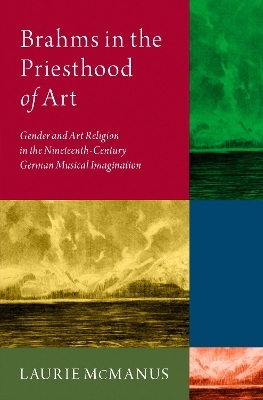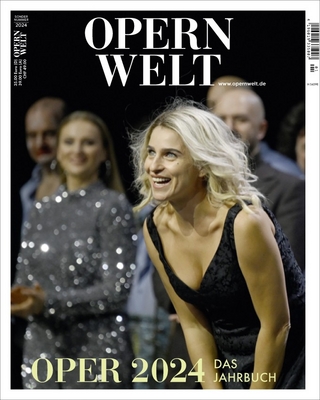
Brahms in the Priesthood of Art
Gender and Art Religion in the Nineteenth-Century German Musical Imagination
Seiten
2021
Oxford University Press Inc (Verlag)
978-0-19-008327-4 (ISBN)
Oxford University Press Inc (Verlag)
978-0-19-008327-4 (ISBN)
The book is about the critical reception of Brahms and his music during his lifetime and shortly after. It explores how the idea of "art religion"--the idea that art could replace religion for spirituality and how musicians could be priests of music--and gender notions intersected in that reception.
Brahms in the Priesthood of Art: Gender and Art Religion in the Nineteenth-Century German Musical Imagination explores the intersection of gender, art religion (Kunstreligion) and other aesthetic currents in Brahms reception of the nineteenth and early twentieth centuries. In particular, it focuses on the theme of the self-sacrificing musician devoted to his art, or "priest of music," with its quasi-mystical and German Romantic implications of purity seemingly at odds with the lived reality of Brahms's bourgeois existence. While such German Romantic notions of art religion informed the thinking on musical purity and performance, after the failed socio-political revolutions of 1848/49, and in the face of scientific developments, the very concept of musical priesthood was questioned as outmoded. Furthermore, its essential gender ambiguity, accommodating such performing mothers as Clara Schumann and Amalie Joachim, could suit the bachelor Brahms but leave the composer open to speculation. Supportive critics combined elements of masculine and feminine values with a muddled rhetoric of prophets, messiahs, martyrs, and other art-religious stereotypes to account for the special status of Brahms and his circle. Detractors tended to locate these stereotypes in a more modern, fin-de-siècle psychological framework that questioned the composer's physical and mental well-being. In analyzing these receptions side by side, this book revises the accepted image of Brahms, recovering lost ambiguities in his reception. It resituates him not only in a romanticized priesthood of art, but also within the cultural and gendered discourses overlooked by the absolute music paradigm.
Brahms in the Priesthood of Art: Gender and Art Religion in the Nineteenth-Century German Musical Imagination explores the intersection of gender, art religion (Kunstreligion) and other aesthetic currents in Brahms reception of the nineteenth and early twentieth centuries. In particular, it focuses on the theme of the self-sacrificing musician devoted to his art, or "priest of music," with its quasi-mystical and German Romantic implications of purity seemingly at odds with the lived reality of Brahms's bourgeois existence. While such German Romantic notions of art religion informed the thinking on musical purity and performance, after the failed socio-political revolutions of 1848/49, and in the face of scientific developments, the very concept of musical priesthood was questioned as outmoded. Furthermore, its essential gender ambiguity, accommodating such performing mothers as Clara Schumann and Amalie Joachim, could suit the bachelor Brahms but leave the composer open to speculation. Supportive critics combined elements of masculine and feminine values with a muddled rhetoric of prophets, messiahs, martyrs, and other art-religious stereotypes to account for the special status of Brahms and his circle. Detractors tended to locate these stereotypes in a more modern, fin-de-siècle psychological framework that questioned the composer's physical and mental well-being. In analyzing these receptions side by side, this book revises the accepted image of Brahms, recovering lost ambiguities in his reception. It resituates him not only in a romanticized priesthood of art, but also within the cultural and gendered discourses overlooked by the absolute music paradigm.
Laurie McManus is Associate Professor and Area Coordinator of Music Literature at Shenandoah Conservatory of Shenandoah University in Winchester, VA.
Introduction
Chapter 1. Imperatives of Purity and Sensuality
Chapter 2. A Post-Romantic Priest of Music
Chapter 3. Priestesses of Art
Chapter 4. The Temptation of Opera
Chapter 5. Ambiguities of the Priesthood
Chapter 6. Prostitutes, Trauma, and Biographical Hermeneutics of the Fin-de-Siècle
Epilogue. Musical Priesthood, Canon Formation, and the Regulation of Performance
Bibliography
Index
| Erscheinungsdatum | 21.01.2021 |
|---|---|
| Zusatzinfo | 13 |
| Verlagsort | New York |
| Sprache | englisch |
| Maße | 236 x 155 mm |
| Gewicht | 540 g |
| Themenwelt | Kunst / Musik / Theater ► Musik ► Klassik / Oper / Musical |
| Kunst / Musik / Theater ► Musik ► Musikgeschichte | |
| Kunst / Musik / Theater ► Musik ► Musiktheorie / Musiklehre | |
| Geisteswissenschaften ► Religion / Theologie | |
| ISBN-10 | 0-19-008327-1 / 0190083271 |
| ISBN-13 | 978-0-19-008327-4 / 9780190083274 |
| Zustand | Neuware |
| Informationen gemäß Produktsicherheitsverordnung (GPSR) | |
| Haben Sie eine Frage zum Produkt? |
Mehr entdecken
aus dem Bereich
aus dem Bereich
Buch | Softcover (2024)
Der Theaterverlag - Friedrich Berlin
CHF 48,95
Mozart und der Abschied von der Aufklärung
Buch | Hardcover (2024)
C.H.Beck (Verlag)
CHF 41,90


